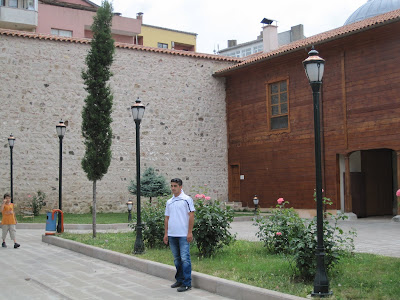History of Sinop, Turkey: Sinop, Turkey, is located on a narrow peninsula in the Black Sea. It was originally a Hittite port and then was re-founded as a colony of Miletus in the 7th century BC. It was capital of the Kingdom of Pontus beginning in 183 BC until 70 BC when it was captured by the Romans. King Mithridates VI Eupater, greatest of the Pontic kings, was born and ultimately buried in Sinop. It was part of the Byzantine Empire until the sacking of Constantinople by the Fourth Crusade in 1204 when it became part of the Trebizond Empire. Sinop was taken by the Seljuk Turks from the Comneni of Trebizond (modern Trabzon) in 1214. Sinop became part of the Ottoman Empire in 1458. During the Crimean War, the Russian navy attacked Sinop and destroyed the Ottoman fleet located there, destroying large parts of the city of Sinop.
Alaaddin Mosque: The Alaaddin Mosque, which has five domes, was built by Alaaddin Keykubad, who was the Seljuk Sultan of Rum from 1220 to 1237. It is difficult to get a good picture of it because of the size and the nearness of other buildings.
This is another picture of the outside, getting more of the mosque to the right, including another of its domes.
Part of what makes it significant is its age: nearly 800 years old. In the courtyard is a fountain used by worshippers to perform ablution, or ritual purification, before praying.
As I understand it, worshippers wash their hands and arms up to the elbow, their face, feet and ankles. The mosque is entered from the inside of the courtyard in about the center.
From the courtyard, where the outer walls and the mosque meet.
Inside is the mihrab, or niche, indicating the direction of Mecca, which is the direction worshippers kneel while praying.
The mihrab is also where the imam leads the five daily prayers. Below, a view of the dome directly above the mihrab.
This mosque was particularly beautiful and inviting because of its simplicity. I loved the clean white walls
and felt it had the most beautiful carpet of any mosque we visited.
The soft carpet masks noise and creates a sense of welcome, of comfort, contrasted with a dark cathedral with stone floors and echoes. Inside, you felt like you were in sacred space.









No comments:
Post a Comment